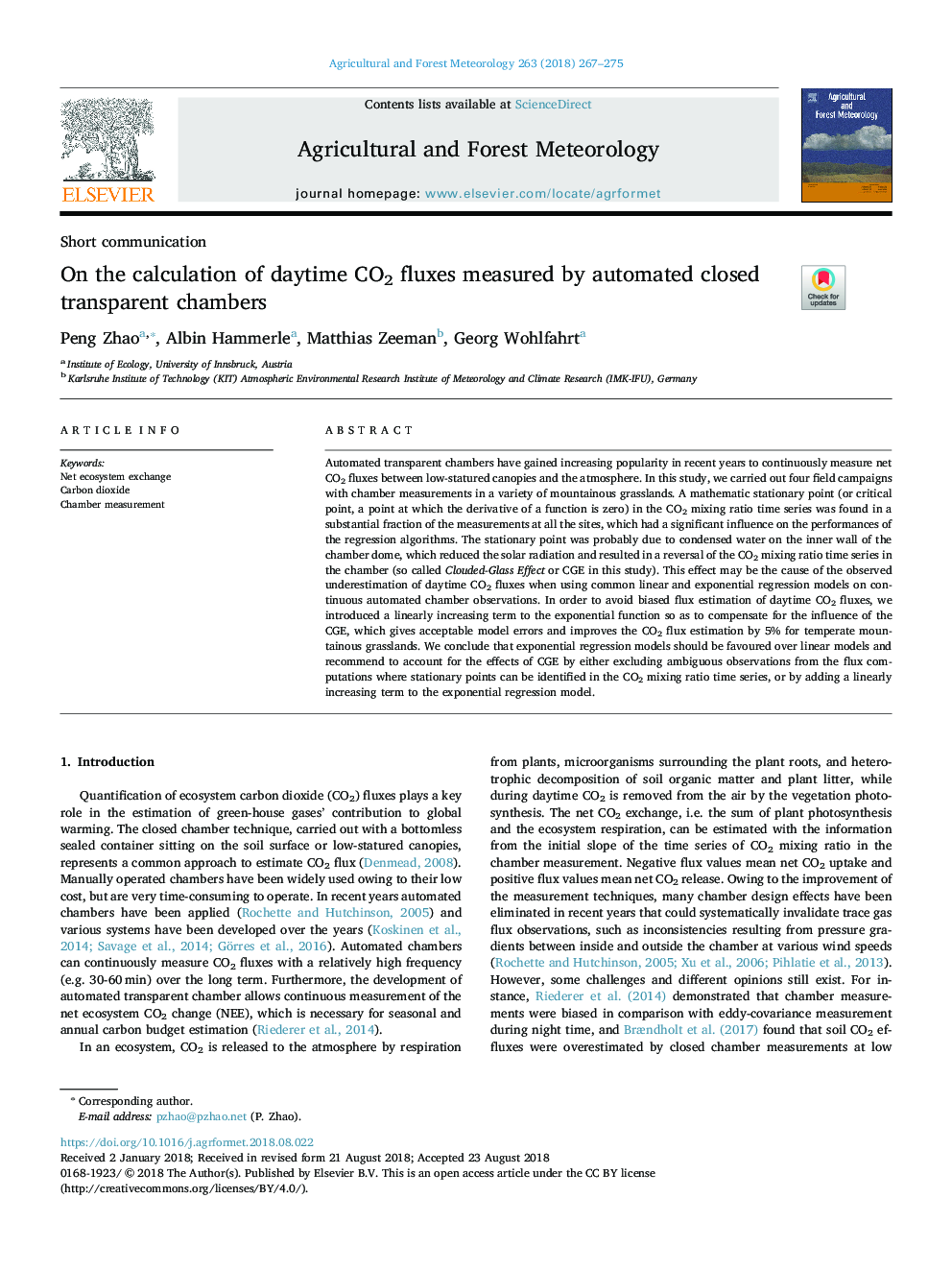| Article ID | Journal | Published Year | Pages | File Type |
|---|---|---|---|---|
| 9951674 | Agricultural and Forest Meteorology | 2018 | 9 Pages |
Abstract
Automated transparent chambers have gained increasing popularity in recent years to continuously measure net CO2 fluxes between low-statured canopies and the atmosphere. In this study, we carried out four field campaigns with chamber measurements in a variety of mountainous grasslands. A mathematic stationary point (or critical point, a point at which the derivative of a function is zero) in the CO2 mixing ratio time series was found in a substantial fraction of the measurements at all the sites, which had a significant influence on the performances of the regression algorithms. The stationary point was probably due to condensed water on the inner wall of the chamber dome, which reduced the solar radiation and resulted in a reversal of the CO2 mixing ratio time series in the chamber (so called Clouded-Glass Effect or CGE in this study). This effect may be the cause of the observed underestimation of daytime CO2 fluxes when using common linear and exponential regression models on continuous automated chamber observations. In order to avoid biased flux estimation of daytime CO2 fluxes, we introduced a linearly increasing term to the exponential function so as to compensate for the influence of the CGE, which gives acceptable model errors and improves the CO2 flux estimation by 5% for temperate mountainous grasslands. We conclude that exponential regression models should be favoured over linear models and recommend to account for the effects of CGE by either excluding ambiguous observations from the flux computations where stationary points can be identified in the CO2 mixing ratio time series, or by adding a linearly increasing term to the exponential regression model.
Keywords
Related Topics
Physical Sciences and Engineering
Earth and Planetary Sciences
Atmospheric Science
Authors
Peng Zhao, Albin Hammerle, Matthias Zeeman, Georg Wohlfahrt,
